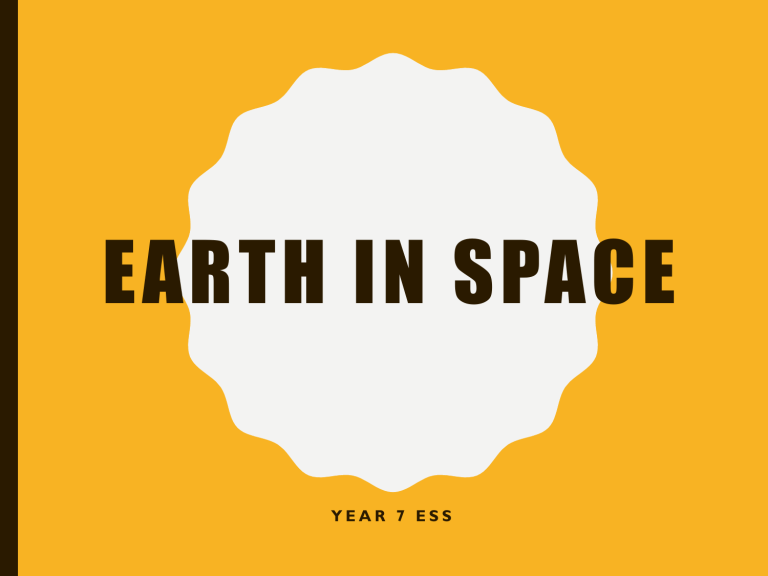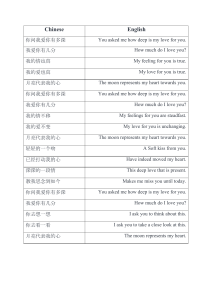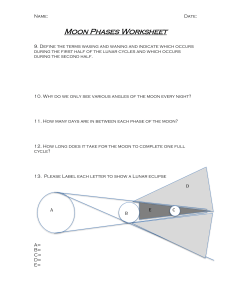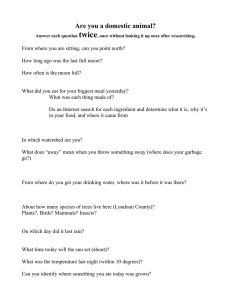
EARTH IN SPACE YEAR 7 ESS DAY AND NIGHT P347 An imaginary line called an ________ runs through the Earth from the _________ pole to the ___________ pole. The time taken for it to rotate once is called it’s _______________. On Earth it takes ______ hours for one rotation. THE YEAR P347 The Earth orbits around the ____________. It takes __________________ days to complete one revolution (complete orbit). The time taken for a planet to complete an orbit of its sun is called it’s ___________. To make up for that ¼ day every 4 years on Earth we have a L_______ Y________, with an extra day on February 29th. REVIEW QUESTIONS Complete review Questions 1, 2, 7, 8, on pg 350 THE MOON Earth’s moon orbits around planet E___________. It takes 27.3 days to complete one orbit. GRAVITY P336 There are non-contact forces between objects called F________ F___________. E.g. Magnets – magnetic force field attracts metals (iron) Around every mass (object) is a g____________ force field that attracts other masses. This attractive force is called G_____________. GRAVITY Every object that has mass and takes up space has a gravitational attraction to other objects. The LARGER the object/mass, the greater the gravitational pull towards that object, thus why we stay planted on Earth! Think about the size of the moon and recall any video of man walking on the moon? How would you describe his motion? Why is it like that? TIDES P337 The m______ is the closest big mass (object) to Earth. Its gravitational pull drags all the w_____ in the oceans and seas towards it. This causes a “bulge” (swelling) on the side of the Earth facing the moon. The same thing happens on the other side of Earth that faces another large mass called the S_______! These moving bulges cause the 2 high tides experienced every day. WORKSHEET • Complete WS 8.4 Tides on pp.124-125 ECLIPSES P.339-340 When the Sun, Moon and Earth line up together so the sun is blocked from either the Earth or Moon an E____________ occurs. Complete this table: Eclipse Description Diagram of Earth, Moon and Sun Solar Eclipse Lunar Eclipse PRACTICAL • Use a torch (Sun), a tennis ball (moon) and a basketball (Earth) to simulate Solar and Lunar Eclipses. PHASES OF THE MOON P. 3 4 0 D R AW A D I AG R A M T H AT E X P L A I N S THE 8 PHASES OF THE MOON IN A LUNAR MONTH. REVIEW • Complete Review Questions 1, 2, 5, 8, on pg 343





